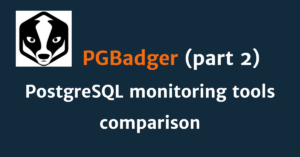Introduction
In the first part of our article, we showed that staging tables are essential in database administration, acting as temporary storage during data processing sequences. They are particularly important in ETL (Extract, Transform, Load) processes, ensuring data accuracy and enhancing performance. In this second part of our discussion, we will explore practical applications and best practices for using staging tables, focusing on migrating data from external sources and recommended approaches for their use.
Example: Migrating data from an external source
Migrating data from an external source to a permanent database is a common task in database administration. Staging tables simplify this process by providing a structured, temporary storage area for the data while it is being processed. Let’s look at an example of migrating data from a CSV file to a permanent SQL Server table:
- Data Extraction: extracting data from the CSV file. This involves reading the data into a form that can be processed.
- Creating a staging table: Create a staging table in the SQL Server database. The structure of this table should mirror the CSV file to ensure compatibility.
- Data transformation: Cleanse, validate and transform the data as required. This may include handling missing values, removing duplicates or applying business rules to the data.
- Load into staging table: Load the cleansed data into the staging table. In this step, the converted data is inserted into the staging table to prepare it for further processing.
- Further processing: Carry out any additional transformations required. For example, a large table can be split into several contiguous tables in the staging table.
- Transfer to the permanent table: Transfer the data from the staging table to the permanent SQL Server table. This final step ensures that the data is moved to its final destination and is ready for use.
By following these steps, you can efficiently migrate data from external sources into your database and ensure that it is clean, validated and transformed according to your requirements.
Best practises for the use of staging tables
The effective use of staging tables requires adherence to certain best practises. These practises help ensure that staging tables are used efficiently and securely and improve overall data management.
- Define a clear purpose: Before creating a staging table, you should define its purpose and scope. This clarity will ensure that the table is designed and used effectively.
- Use consistent naming conventions: Use consistent naming conventions for staging tables. This practise makes it easier to identify and manage the tables.
- Document the schema of the staging tables: Document the schema of each staging table. Clear documentation helps to ensure that the structure and content of the table is well understood by all users.
- Automate the loading and conversion of data: Automate the processes for loading and transforming data. Automation ensures that the staging tables are always up to date and reduces the risk of errors.
- Data partitioning: Partition staging tables to improve performance. Partitioning allows data to be processed in parallel, speeding up ETL processes.
- Minimise indexing: Keep indexing in staging tables to a minimum. Excessive indexing can slow down the data loading process.
- Purging of data: Implement a strategy to regularly purge data from staging tables. This practise helps to free up storage space and maintain performance.
- Error logging: Maintain logs for errors that occur during the ETL process. Error logs are essential for troubleshooting and improving the ETL process.
- Implement data quality controls: Perform data quality checks on staging tables to identify and correct errors before the data is loaded into the target data warehouse or data mart.
- Archive or delete staging tables: Archive or delete staging tables when they are no longer needed. This approach helps manage database space and keeps the database environment clean.
Conclusion
Staging tables are essential for efficient and accurate data management in modern databases. They provide a controlled environment for purging, transforming and loading data and ensure that the final database remains consistent and performant.
Integrating staging tables into your workflow can significantly optimise your database management processes. If you need expert advice or customised solutions for your specific requirements, contact us. We will be happy to help you achieve the best possible results for your database management projects.
In the third part of this series, we will explore the practical application of staging tables on the Oracle platform.



